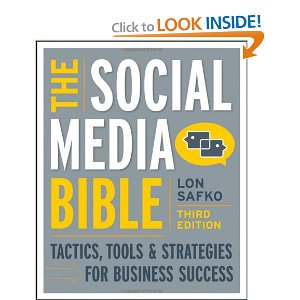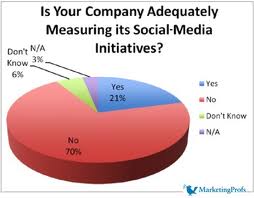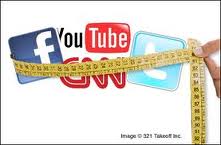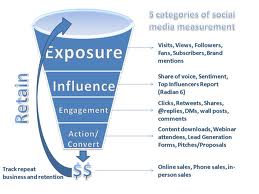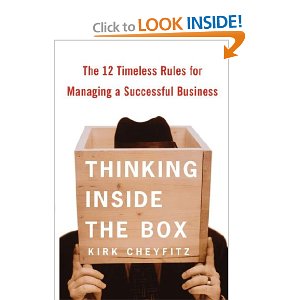 As promised in last Friday’s post, I dedicated Tuesday, yesterday and today to challenging proponents of “outside-the-box thinking” and examining various “inside-the-box thinking” principles. This week’s posts were determined by DonorDreams blog subscribers who took the time to voice their opinions via a poll last Friday. Thank you to those of you who voted. Additionally, the foundation of these posts are rooted in Kirk Cheyfitz’s book “Thinking Insider The Box: The 12 Timeless Rules for Managing a Successful Business.”
As promised in last Friday’s post, I dedicated Tuesday, yesterday and today to challenging proponents of “outside-the-box thinking” and examining various “inside-the-box thinking” principles. This week’s posts were determined by DonorDreams blog subscribers who took the time to voice their opinions via a poll last Friday. Thank you to those of you who voted. Additionally, the foundation of these posts are rooted in Kirk Cheyfitz’s book “Thinking Insider The Box: The 12 Timeless Rules for Managing a Successful Business.”
DonorDreams blog subscribers voted to hear more about chapter six of Cheyfitz’s book, which is titled “The Marketing Box: Unifying the Whole Business”.
I love how the author starts each chapter with a short sentence that serves as “food for thought”. The following is how chapter six started:
“You should be selling all the time.”
This is a complex chapter and a little mind-bending because the author contends that the average person’s idea about marketing is all wrong. Most people equate marketing with advertising, when in reality it is much bigger. He says in the book:
“Economists, academics, and marketing professionals have come to see marketing this way — as the single discipline that embraces and unites virtually every aspect of business activity. Marketing: Guides production . . . Governs distribution . . . Controls advertising, promotion and all marketing communications . . . Peter Drucker has written that business’s only purpose is “to create a customer,” and because of that, “marketing and innovation” are the two basic functions of business”.
Well . . . WOW! In a nutshell, Cheyfitz is saying:
Marketing is everything and
successful businesses do it all the time!
 As I said in yesterday’s post, this concept is a little difficult to apply to non-profit corporations because the word “customer” usually conjures up images of clients and donors (or both) depending on which chair you sit in. Unlike yesterday, I won’t limit today’s blog to just talking about donors. I will attempt to GO GLOBAL.
As I said in yesterday’s post, this concept is a little difficult to apply to non-profit corporations because the word “customer” usually conjures up images of clients and donors (or both) depending on which chair you sit in. Unlike yesterday, I won’t limit today’s blog to just talking about donors. I will attempt to GO GLOBAL.
I could probably write pages and pages on this topic because there is a lot of ground to cover. Instead, I will start a laundry list of examples and hand-off the baton to you so you can continue it in the comment section.
The following are just a few examples of marketing (and you will see how it unifies everything we do):
- How your program staff talks to and treats clients is marketing because it shapes the perceptions of your brand in the community among volunteers, donors, potential staff, prospective donors and future board members.
- The decision to create a new program and write a big grant to get it off the ground is marketing. You are sending messages to people around you about what is important and what is a priority. These messages get picked up by volunteers, staff, clients, and donors. They in turn amplify these messages throughout the community. These actions and messages will even impact the long-term sustainability of your new program depending on donor perceptions.
- Sticking with the creation of new programming from the last bullet point . . . talking with clients and prospective clients before making the decision to offer that new service is marketing. If your new program doesn’t fill a community need and your actual or potential clients, then it is your initiative will likely failure (which will likely have a ripple effect among donors, etc).
- How and what the executive director says to or does with their staff is marketing. When they tell co-workers that the agency has challenges, it impacts staff turnover and in turn affects program quality and how the donor community’s perceptions of their investments.
- Talking to volunteers and donors before developing another special event fundraiser is marketing. You need to determine if people will support this new idea before investing time and money into developing it.
- What an executive director includes in the board packet and says in the boardroom is marketing. All of those messages get amplified by your community ambassadors (aka board volunteers) on the street when they’re networking.
 Cheyfitz tells us that marketing happens pre-production, during production, and definitely after production. In non-profit terms, it happens before the donor writes the check, during the solicitation process, and in-between gifts for the duration of your relationship with that donor. More specifically, marketing happens during every waking moment of a non-profit professional’s life in their dealing with staff, volunteers, clients, board members, donors, and the community-at-large.
Cheyfitz tells us that marketing happens pre-production, during production, and definitely after production. In non-profit terms, it happens before the donor writes the check, during the solicitation process, and in-between gifts for the duration of your relationship with that donor. More specifically, marketing happens during every waking moment of a non-profit professional’s life in their dealing with staff, volunteers, clients, board members, donors, and the community-at-large.
At the end of this chapter, Cheyfitz offers six different tips on how to build your organization’s box rather as opposed to thinking outside of it. I won’t ruin the surprise (because you should buy this book and read it), but I will share two of his tips to whet your appetite:
- Marketing (in other words everything you do) must unify every aspect of a business around one purpose: creating a customer.
- Every time a company touches a customer, there is an opportunity to win or lose that customer. These opportunities must be maximized, not avoided.
How does your organization see and approach “marketing”? Are you trying to thread the idea of marketing throughout everything you do? If so, can you share a few examples? How do you prepare others (e.g. staff, board members, etc) to communicate and demonstrate what your agency is all about? Please share your thoughts in the comment box below.
Here’s to your health!
Erik Anderson
Founder & President, The Healthy Non-Profit LLC
www.thehealthynonprofit.com
erik@thehealthynonprofit.com
http://twitter.com/#!/eanderson847
http://www.facebook.com/eanderson847
http://www.linkedin.com/in/erikanderson847



